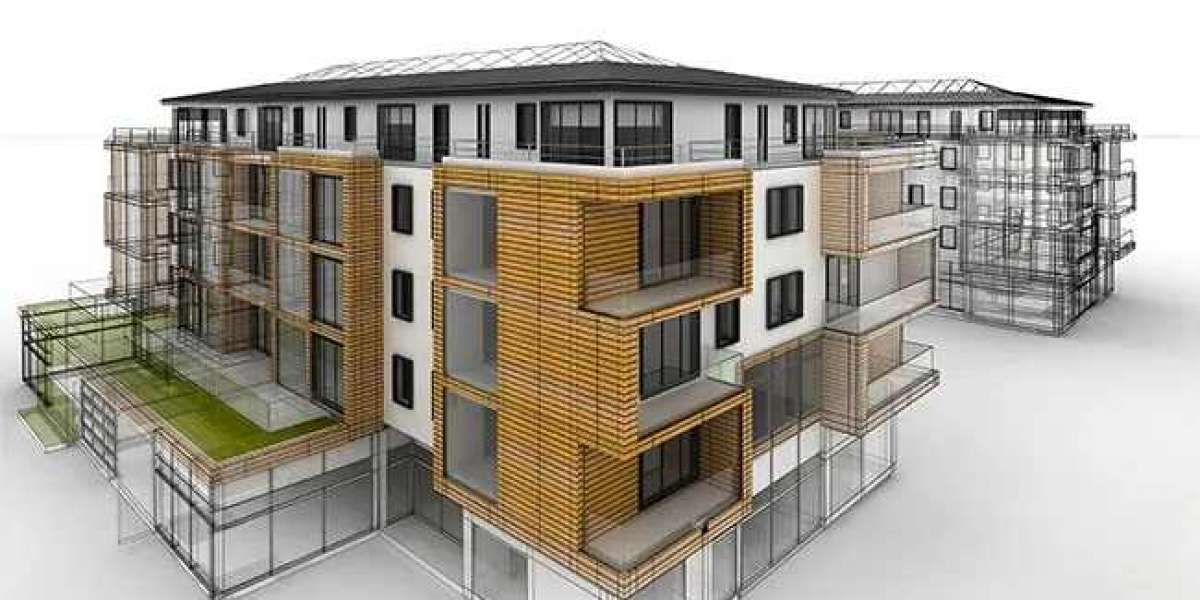In the ever-evolving world of construction and engineering, delays, design conflicts, and budget overruns remain persistent challenges. According to a McKinsey report, large construction projects typically take 20% longer to finish than scheduled and can exceed budgets by up to 80%. So, what’s missing? Effective coordination and proactive clash detection.
This blog post explores how Revit Modeling Services are revolutionizing construction workflows by improving collaboration, enhancing accuracy, and eliminating clashes before they happen. By the end of this article, you will understand how these services can make your projects more predictable, cost-effective, and efficient.
What Are Revit Modeling Services?
Definition and Core Features
Revit Modeling Services involve the use of Autodesk Revit, a powerful Building Information Modeling (BIM) tool, to create accurate and data-rich 3D models of architectural, structural, and MEP elements. These models form the backbone of project visualization, documentation, and collaboration.
Role of Revit in BIM Workflows
Revit supports an integrated BIM workflow where all project stakeholders work from a single source of truth. Whether it’s architects designing floor layouts or MEP engineers routing complex duct systems, everyone uses the same model. This approach significantly reduces errors, improves coordination, and speeds up decision-making.
The Need for Coordination in Modern Construction
Complexities in Multi-Disciplinary Collaboration
Construction today involves multiple disciplines, each with its own models and specifications. Coordination becomes challenging when architects, civil engineers, and MEP consultants work in silos.
Common Issues Due to Poor Coordination
- Design conflicts between trades
- Last-minute change orders
- Repetitive rework cycles
These inefficiencies not only delay project timelines but also inflate costs. That’s where Revit Modeling Services comes in, promoting integrated collaboration and reducing information silos.
How Revit Enhances Project Coordination
Centralized Data and Model Sharing
With Revit, data resides in a central model, allowing simultaneous access to various teams. Updates made by one team are instantly visible to others, reducing version conflicts and missed changes.
Real-Time Collaboration Among Stakeholders
Using cloud-based tools like BIM 360, teams can co-author models and review progress in real-time. This seamless communication ensures issues are identified and resolved before they escalate.
Improved Documentation and Version Control
Revit provides version tracking and automated documentation, ensuring all project stakeholders have access to the latest information.
Understanding Clash Detection in Construction
What Is Clash Detection?
Clash detection is the process of identifying conflicts where different building systems interfere with each other spatially or functionally.
Types of Clashes
- Hard Clashes: Physical collisions (e.g., pipe vs. beam)
- Soft Clashes: Clearance violations (e.g., maintenance access)
- Workflow Clashes: Scheduling conflicts or sequencing issues
By detecting these clashes during the design phase, Revit Modeling Services helps avoid costly field rework and delays.
Role of Revit Modeling in Clash Detection
Model-Based Clash Identification
Revit models are inherently intelligent and parametric. Elements "know" their geometry, allowing automated clash detection through built-in or external tools.
Integration with Tools Like Navisworks
Revit models can be imported into Navisworks for in-depth clash analysis. This combination allows for 3D coordination meetings and visual issue tracking.
Pre-Construction Conflict Resolution
With accurate modeling and early detection, potential clashes are resolved virtually before they impact construction, enabling smoother execution and fewer RFIs.
Benefits of Revit Modeling Services in Clash Detection
Reduced Rework and Project Delays
Early detection means problems are fixed in the design stage, saving time and reducing change orders.
Enhanced Cost Savings
Fewer site conflicts lead to optimized material usage and labor deployment, directly impacting project profitability.
Improved On-Site Efficiency and Safety
With well-coordinated layouts, on-site teams face fewer surprises, improving safety and reducing stress.
Research shows that 75% of BIM users report improved safety records due to better planning and coordination.
Choosing the Right Revit Modeling Services Provider
Key Qualities to Look For
- Proficiency in Revit and BIM workflows
- Experience across multiple building types
- Strong coordination and clash resolution track record
Importance of Experience and Software Proficiency
Not all providers are equal. A partner like JF India Pvt Ltd, with deep expertise in Revit, Navisworks, and BIM 360, ensures seamless integration across disciplines, accurate modeling, and proactive clash detection.
Conclusion
Revit Modeling Services are transforming the way construction professionals handle project coordination and clash detection. By centralizing information, enabling real-time collaboration, and offering advanced tools for early clash identification, Revit empowers teams to work more efficiently and avoid costly mistakes. As the construction industry continues to embrace digital transformation, adopting Revit-based workflows is no longer optional—it's essential for delivering high-quality, timely, and cost-effective projects.
JF India Pvt Ltd: Leading the Way in BIM Coordination and Revit Modeling
As a forward-thinking engineering solutions provider, JF India Pvt Ltd has carved a niche in the global AEC industry by delivering high-quality Revit Modeling Services tailored to the demands of modern construction. Their team of experienced engineers, BIM specialists, and Revit experts brings deep domain knowledge and technological agility to every project. From complex commercial towers to highly regulated healthcare facilities, JF’s ability to prevent design clashes and enhance coordination has translated into faster delivery timelines and lower costs for clients. Their commitment to innovation, precision, and collaboration makes them a preferred partner for organizations seeking reliable and future-ready BIM solutions.




